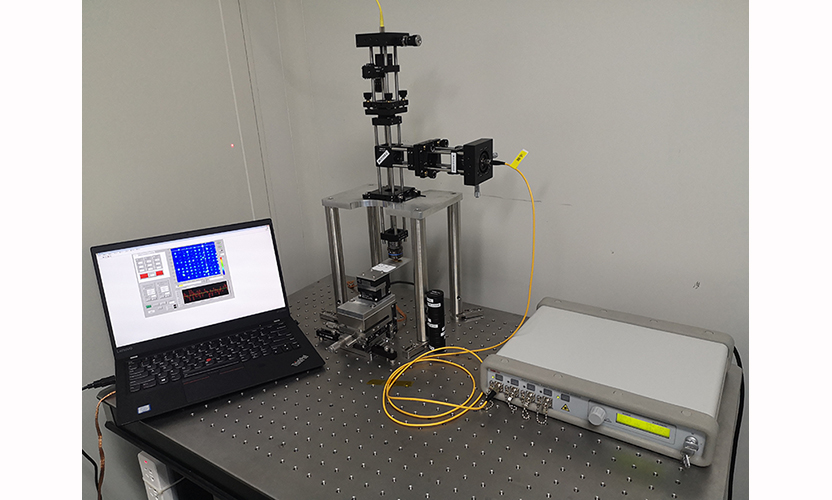Quadruple Semiconductor Light Detection Magnetic Resonance Spectrometer
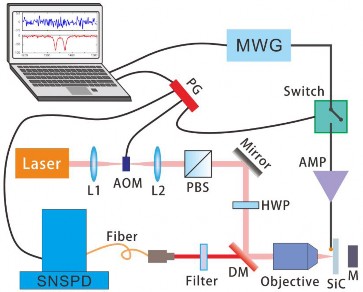
Figure 1. Schematic diagram of a light-detecting magnetic resonance spectrometer.
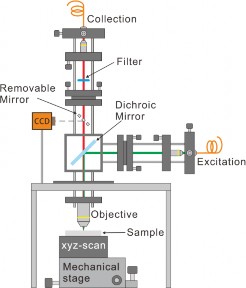

Figure 2. Room Temperature System Figure 3. Low Temperature System
System Features
-
532nm/721nm/914nm Multiple wavelength lasers can be freely switched;
-
The fluorescence collection band can realize the full coverage of 600-1550nm;
-
It is also configured with a superconducting single photon detector and a silicon-based photomultiplier single photon detector;
-
XYZ 3-axis nanoscale sample scanning and localization;
-
Fully digital instrument control, automated light-detection magnetic resonance spectroscopy measurements, and automatic drift calibration;
-
Flexibility to customize and expand the application system according to customer needs;
-
Provides customized single-spin color-center array specimens for four-group semiconductors;
Main technical specifications of a four-group semiconductor light-detecting magnetic resonance spectrometer:
I. Excitation light module:
1、 Excitation wavelength 1532 nm, 721 nm, 914 nm
2、 Excitation power: ≥ 100 mW
3、 Switching ratio: ≥50dB
4、 Power jitter within 1 hour ≤1%
II. Collection of optical modules:
1. Fluorescence collection band 1: 600-850 nm
2. Fluorescence collection band 2: 800-1050 nm
3. Fluorescence collection band 3: 1000-1550 nm
4, Detectors: 2-channel single-photon detector 4-channel superconducting single-photon detector switching
5, superconducting single photon detector detection efficiency ≥ 80%, dark count ≤ 50cps
III. Scanning module:
1、 Fine scanning range 100um*100um
2、 Fine displacement resolution: 1nm
3、 Coarse adjustment range: 10mm*10mm
4、 Coarse adjustment displacement resolution: 1um
IV. Microwave sequence control module:
1、 Timing accuracy: 2 ns
2、 Minimum pulse width: 10ns
3、 Number of channels: 16
V. Microwave generation module:
1. Microwave band: 0.1 GHz - 6 GHz
2、 Microwave power: 25 W
3、 Frequency resolution: 3 Hz
4、Output power attenuation range: 0 - 85 dB
5、 Amplitude accuracy: ≤ 0.25 d B
VI. RF power amplifier module:
1. Bandwidth: 0.1-200 MHz
2、 Power: 20 W
3. Isolation: 70 d B
VII. Magnetic field systems:
Three-dimensional magnetic field, uniaxial field strength, continuously adjustable from 0-500 gauss
VIII. Standard samples:
1, 4H silicon carbide, a single silicon vacancy color core array samples, single color core ratio ≥ 30%, single color core saturation fluorescence intensity ≥ 8kcps
2, 4H Silicon Carbide, a single two-space color core array sample, single color core ratio ≥ 30%, single color core saturation fluorescence intensity ≥ 130kcps ODMR contrast ≥ 25%
3, 4H silicon carbide, single NV color core array sample, single color core ratio ≥20%
4, Diamond NV color core system samples, ODMR contrast ≥ 15%
IX. Instrument control software:
Fluorescence scanning and imaging; characterization of the properties of diamond NV color centers, silicon carbide silicon vacancy color centers, double vacancy color centers, NV color centers, and other color centers; light-detection magnetic resonance spectroscopy measurements; all-digital instrumentation control; parameter fitting of experimental results; automated monochromatic color center finding and measurement analysis; and automated drift calibration.
Hardware Configuration of a Four-Group Semiconductor Light-Detecting Magnetic Resonance Spectrometer
1. Continuous wave lasers
|
laser wavelength |
532nm/721nm/914nm |
|
output power |
≥ 100 mW |
|
switching ratio |
≥50dB |
|
1 Hour Power Jitter |
≤1% |
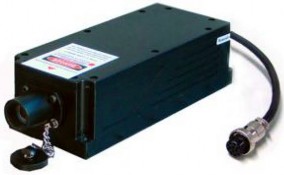
2. Single photon detectors
|
Detection wavelength range |
400-1000nm |
|
Maximum detection efficiency |
70% |
|
dark count |
≤100cps |
|
time resolution |
250 ps |
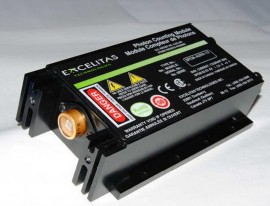
3. Superconducting single photon detectors
|
Detection wavelength range |
1000-1550nm |
|
Maximum detection efficiency |
85% |
|
dark count |
≤50cps |
|
time jitter |
≤50 ps |
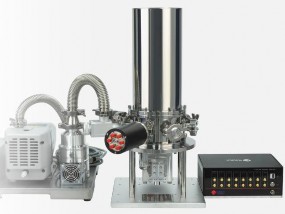
4. XYZ Scanning Module
|
Closed loop travel |
100×100×100μm |
|
open loop travel |
120×120×120μm |
|
resolution (of a photo) |
0.2 nm |
|
linearity error |
0.1% |
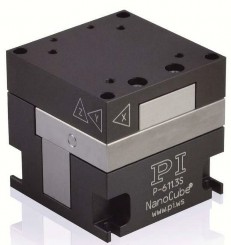
5. Infrared Objective Lens
|
Numerical Aperture NA |
0.85 |
|
Working distance |
1 mm |
|
Range of correction |
0-1.2 mm |
|
Lens Coating |
near infrared (NIR) band |
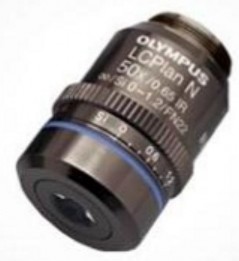
6. Visible Objective Lens
|
Numerical Aperture NA |
0.8 |
|
Working distance |
3.4 mm |
|
magnifying power |
100X |
|
Lens Coating |
visible wavelength |
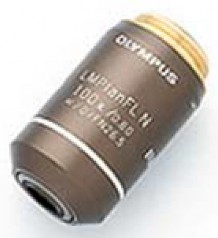
7. Microwave Emission Sources
|
frequency range |
0.1GHz-6000GHz |
|
frequency resolution |
3 Hz |
|
Output power attenuation range |
0-85 dB |
|
amplitude accuracy |
0.25 dB |
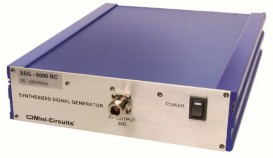
8. Radio Frequency Emission Sources
|
frequency range |
0-250MHz |
|
sampling rate |
2 GSa/S |
|
Record length |
16 MSa/channel |
|
vertical resolution |
14 bits |
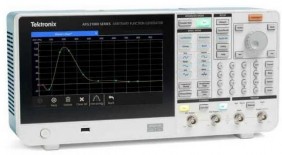
Applications:
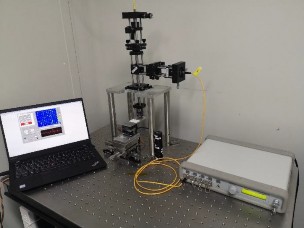
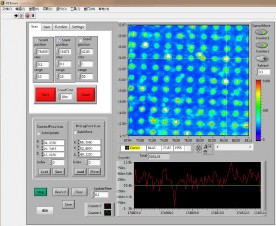
Figure 4. Quadruple Semiconductor Light Detection Magnetic Resonance Spectrometer Figure 5. Control Software Interface
(User: University of Science and Technology of China)
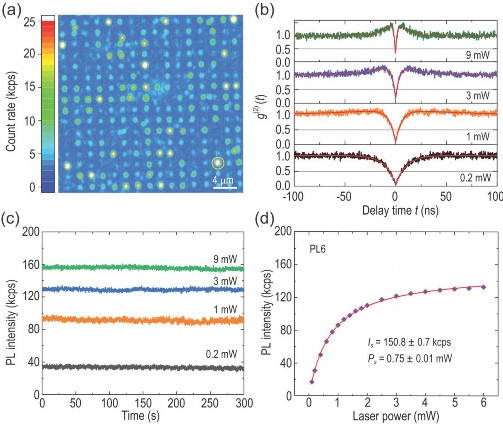
Fig. 6. Photodetected magnetic resonance spectra and optical property measurements of a single two-space color center in silicon carbide.
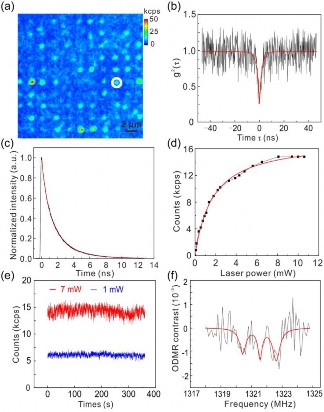
Magnetic resonance spectra and optical property measurements of a single NV color-centered photoprobe of silicon carbide.
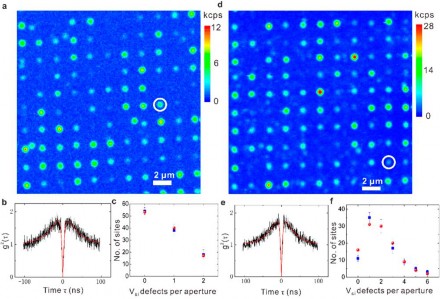
Figure 8. Silicon Carbide Single Silicon Vacancy Color Center Array Specimen Test Results
Apply this system to publish a list of articles:
- Qiang Li#, Jun Feng Wang#, Fei Fei Yan, Ji Yang Zhou, Han Feng Wang, He Liu, Li Ping Guo, Xiong Zhou, Adam Gali, Zheng Hao Liu, Zu Qing Wang, Kai Sun, Guo Ping Guo, Jian Shun Tang, Jin Shi Jin Shi*, Chuan Feng Li*, and Guang Can Guo, Room temperature coherent manipulation of single-spin qubits in silicon carbide with a high readout contrast. Natl Sci. Rev. 9, nwab122 (2022).
- Wei Liu, Zhi-Peng Li, Yuan-Ze Yang, Shang Yu, Yu Meng, Zhao-An Wang, Nai-Jie Guo, Fei-Fei, Yan, Qiang Li, Jun-Feng Wang, Jin-Shi Xu, Yang Dong, Xiang-Dong Chen, Fang-Wen Sun, Yitao Wang, Jian-Shun Tang, Chuan-Feng Li and Guang-Can Guo. Rabi oscillation of VB- spin in hexagonal boron nitride. Chen, Fang-Wen Sun, Yitao Wang, Jian-Shun Tang, Chuan-Feng Li and Guang-Can Guo. Rabi oscillation of VB- spin in hexagonal boron nitride. Nat. Commun. 13, 5713 (2022).
- Jun-Feng Wang, Fei-Fei Yan, Qiang Li, Zheng-Hao Liu, Jin-Ming Cui, Zhao-Di Liu, Adam Gali*, Jin-Shi Xu*, Chuan-Feng Li*, and Guang-Can Guo, Robust coherent control of solid-state spin qubits using anti-Stokes excitation. Nat. Commum. 12, 3223 (2021).
- Jun-Feng Wang, Fei-Fei Yan, Qiang Li, Zheng-Hao Liu, He Liu, Guo-Ping Guo, Li-Ping Guo, Xiong Zhou, Jin- Ming Cui, Jian Wang, Zong-Quan Zhou, Xiao-Ye Xu, Jin-Shi Xu Jin-Shi Xu*, Chuan-Feng Li*, and Guang-Can Guo, Coherent control nitrogen-vacancy center spins in silicon carbide at room temperature. Phys. Rev. Lett. 124, 223601 (2020).
- Yu Wei Liao#, Qiang Li#,*, Mu Yang#, Zheng-Hao Liu, Fei Fei Yan, Jun-Feng Wang, Ji-Yang Zhou, Wu-Xi Lin, Yi-Dan Tang, Jin Shi Xu*, Chuan Feng Li*, and Guang Can Guo, Deep learning enhanced single spin readout in silicon carbide at room temperature, in Phys. Rev. Appl. 17, 034046 (2022).
- Ji-Yang Zhou#, Qiang Li#, Ze-Yan Hao, Fei-Fei Yan, Mu Yang, Jun-Feng Wang, Wu-Xi Lin, Zheng-Hao Liu, Wen Liu, Jin-Shi Xu*, Chuan-Feng Li*, and Guang-Can Guo. Experimental determination of the dipole orientation of single color centers in silicon carbide, ACS Photonics 8, 2384-2391 (2021).
- Qiang Li#, Jun-Feng Wang#, Fei-Fei Yan, Ze-Di Cheng, Zheng-Hao Liu, Kun Zhou, Li-Ping Guo, Xiong Zhou, Wei-Ping Zhang, Xiu-Xia Wang, Wei Huang, Jin-Shi Xu*, Chuan-Feng Li*, and Guang-Can Guo, Nanoscale depth control of implanted shallow silicon vacancies in silicon carbide, in Nanoscale, 11, 20554 (2019).
- Fei-Fei Yan#, Zhen-Peng Xu#, Qiang Li, Jun-Feng Wang, Ji-Yang Zhou, Wu-Xi Lin, Jin-Shi Xu*, Yuyi Wang, Chuan-Feng Li*, and Guang-Can Guo, Room-temperature implementation of the quantum streaming algorithm in a single solid-state spin qubit. Phys. Rev. Appl. 16, 024027 (2021).
- Jun-Feng Wang, Ji-Yang Zhou, Qiang Li, Fei-Fei Yan, Mu Yang, Wu Xi Lin, Ze-Yan Hao, Zhi-Peng Li, Zheng- Hao Liu, Wei Liu, Kai Sun, Yu Wei, Jian-Shun Tang, Jin-Shi Xu, Jiang-Xi Xu, Zheng- Hao Liu, Wei Liu, Kai Sun, Yu Wei, Jian-Shun Tang, Jin-Shi Xu. Jin-Shi Xu*, Chuan-Feng Li*, and Guang-Can Guo. Optical charge state manipulation of divacancy spins in silicon carbide under resonant excitation. Photonics Research 9, 1752-1757 (2021).
- Fei-Fei Yan#, Ai-Lun Yi#, Jun-Feng Wang, Qiang Li, Pei Yu, Jia-Xiang Zhang, Adam Gali, Ya Wang, Jin-Shi Xu*, Xin Ou*, Chuan-Feng Li*, and Guang-Can Guo, Room-temperature coherent control of implanted defect spins in silicon carbide, in npj Quant. Infor. 6, 38 (2020).
- Jun-Feng Wang#, Qiang Li#, Fei-Fei Yan, He Liu, Guo-Ping Guo, Wei-Ping Zhang, Xiong Zhou, Li-Ping Guo, Zhi-Hai Lin, Jin-Ming Cui, Xiao-Ye Xu, Jin-Shi Xu*, Chuan-Feng Li*, and Guang-Can Guo, On-Demand Generation of Single Silicon Vacancy in Silicon Carbide, ACS Photonics, 6, 1736-1743 (2019).

